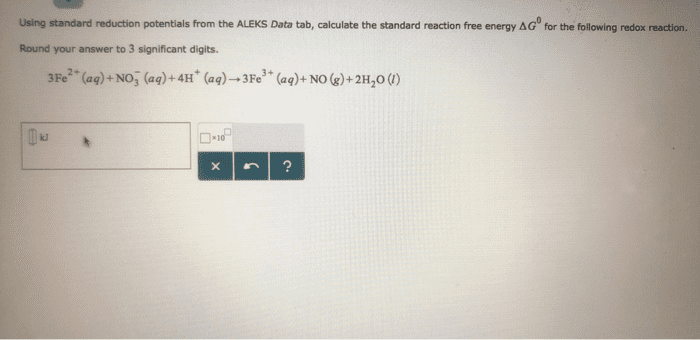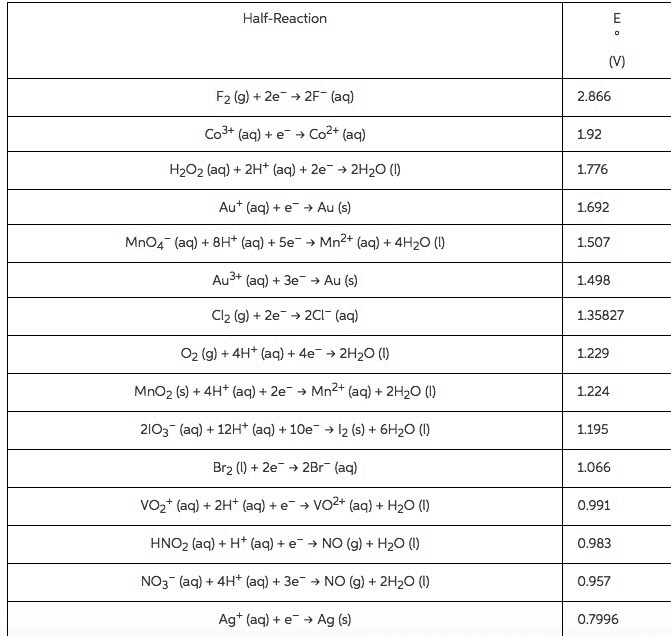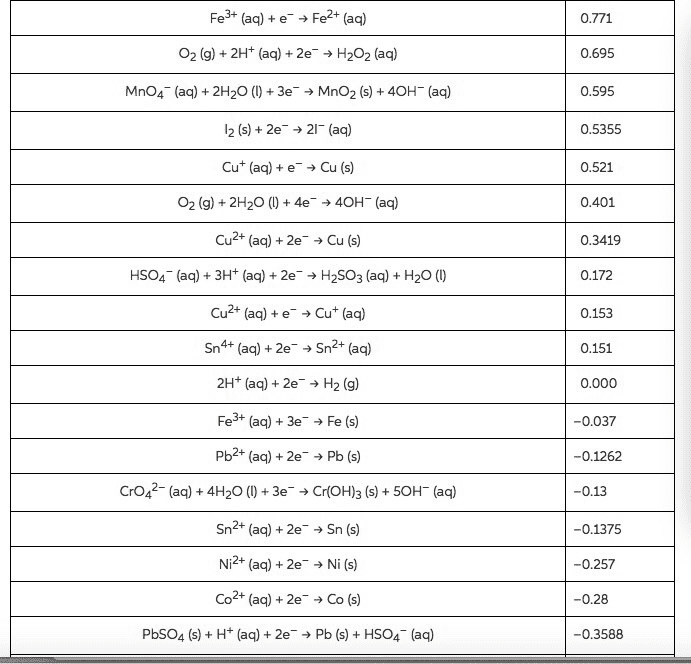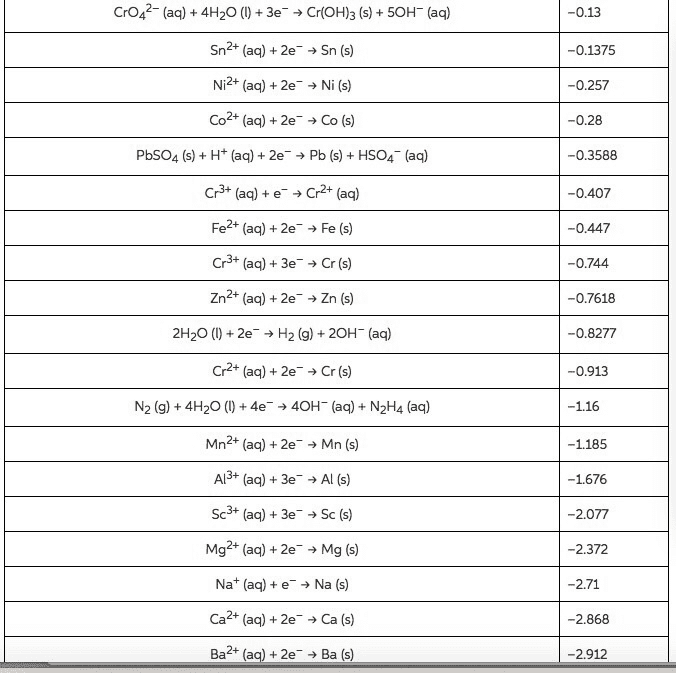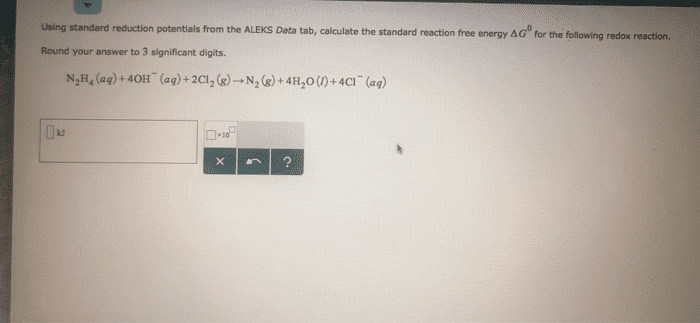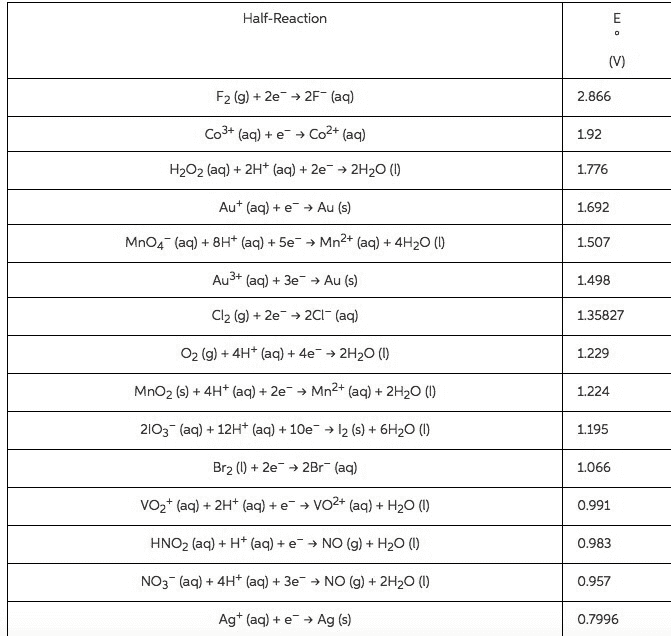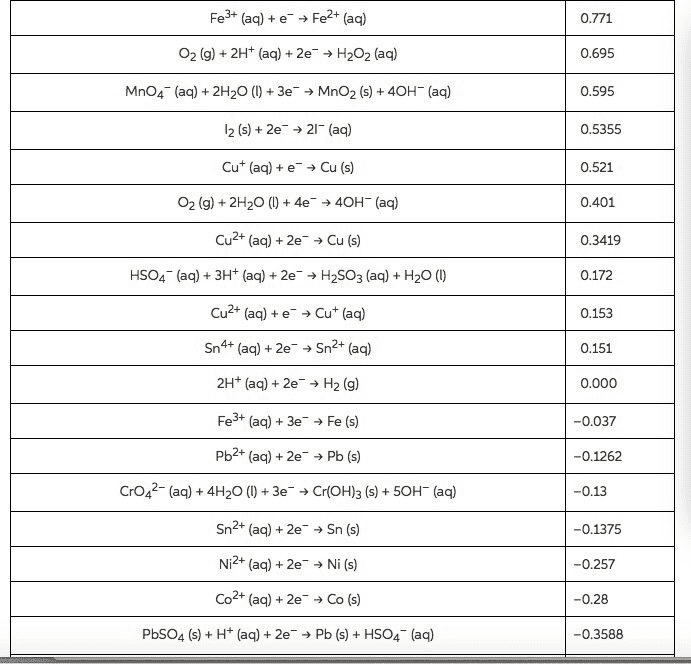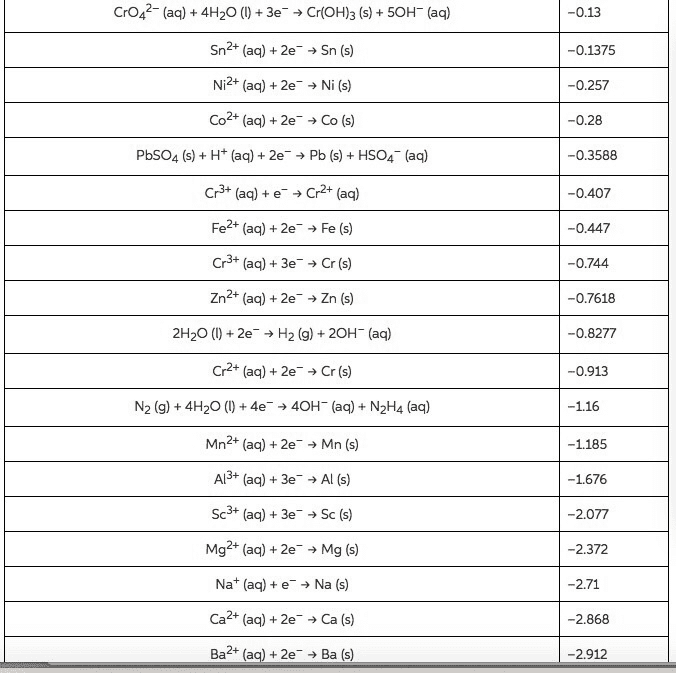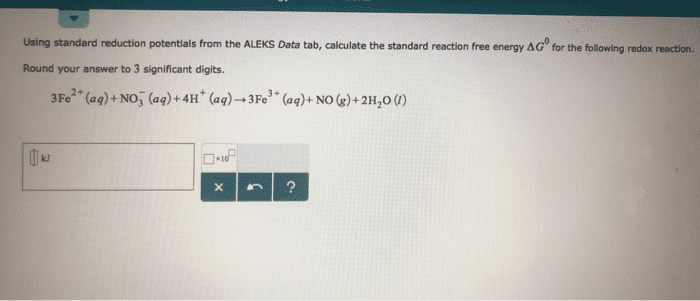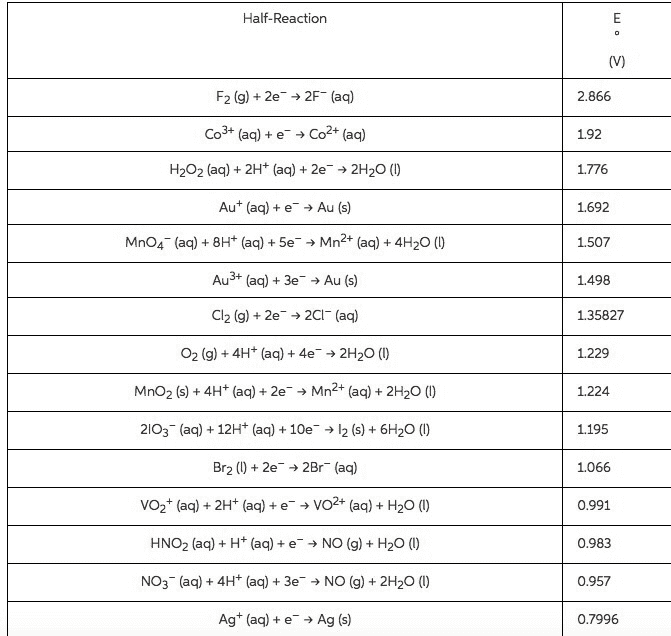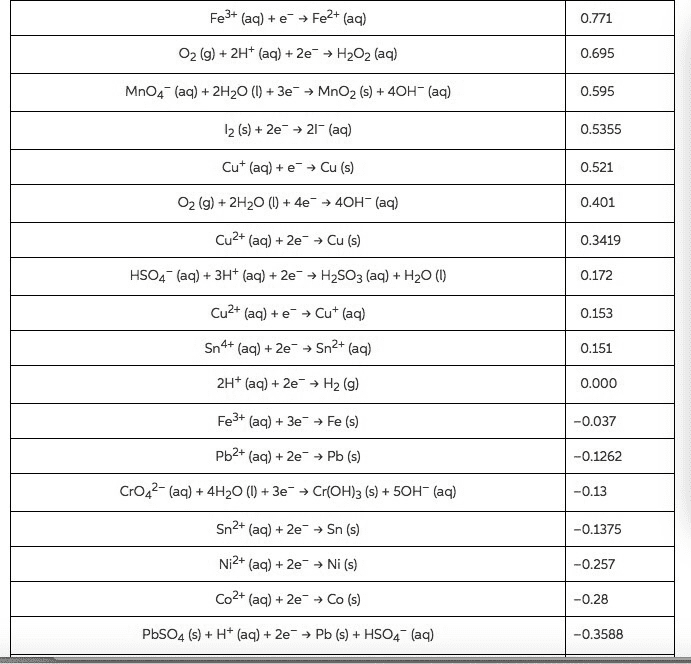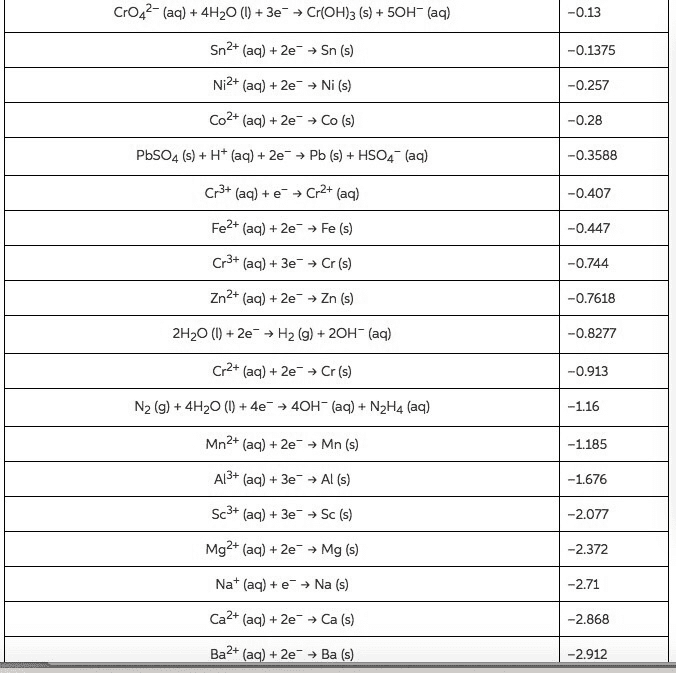030.102 Lecture Notes - Lecture 6: Membrane Potential, Electromotive Force
45 views4 pages
Document Summary
Current can be used to convert chemical energy to perform work. Sn is anode, by contention; hg(l) is cathode. Overall reaction: sn(s) +hg2cl2(aq) -->2 hg(l) + 2 cl- + sn2+(aq) 2+ + 2e- --> 2 hg(l) or hg2cl2(s) + 2e- --> 2 hg(l) + 2 cl- Step 2: balance atoms (mass) & charges in each half reaction. Add in h2o to balance o, and h+ to balance h"s, charges must be balanced on both sides. 3e + 4h + no3 (aq) --> no(g) + 2 h2o. Step 3: multiply each half-reaction by an integer to cancel out electrons. 4 h2o + cus (s) --> cu2+ (aq) + so4. (aq) --> no(g) + 2 h2o *8. (aq) + 8h+ --> 8no(g) + 3cu2+ (aq) + 3so4. Electrons are driven from anode to cathode by an electromotive force or emf. Balanced half reactions can be added together to get overall balanced euqation.
Get access
Grade+
$40 USD/m
Billed monthly

Homework Help
Study Guides
Textbook Solutions
Class Notes
Textbook Notes
Booster Class
10 Verified Answers
Class+
$30 USD/m
Billed monthly

Homework Help
Study Guides
Textbook Solutions
Class Notes
Textbook Notes
Booster Class
7 Verified Answers
